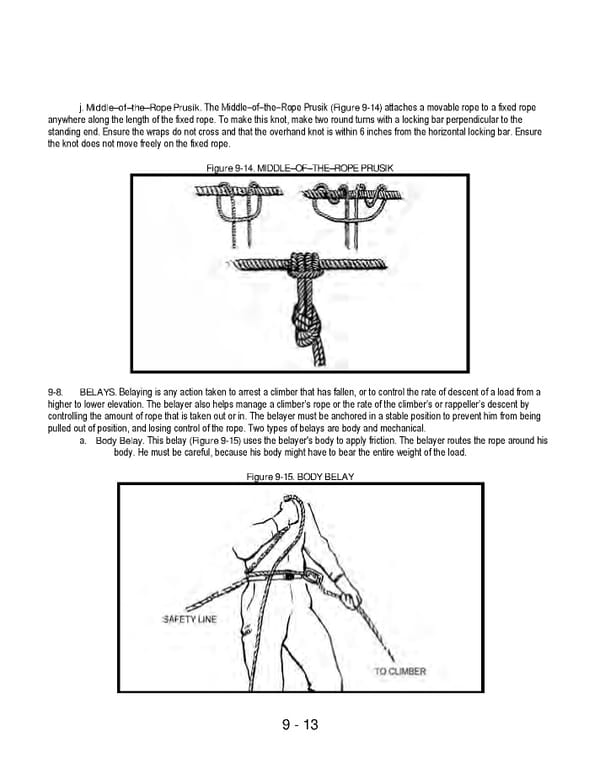9 - 13 j. Middle–of–the–Rope Prusik. The Middle–of–the–Rope Prusik (Figure 9-14) attaches a movable rope to a fixed rope anywhere along the length of the fixed rope. To make this knot, make two round turns with a locking bar perpendicular to the standing end. Ensure the wraps do not cross and that the overhand knot is within 6 inches from the horizontal locking bar. Ensure the knot does not move freely on the fixed rope. Figure 9-14. MIDDLE–OF–THE–ROPE PRUSIK 9-8. BELAYS. Belaying is any action taken to arrest a climber that has fallen, or to control the rate of descent of a load from a higher to lower elevation. The belayer also helps manage a climber’s rope or the rate of the climber’s or rappeller’s descent by controlling the amount of rope that is taken out or in. The belayer must be anchored in a stable position to prevent him from being pulled out of position, and losing control of the rope. Two types of belays are body and mechanical. a. Body Belay. This belay (Figure 9-15) uses the belayer's body to apply friction. The belayer routes the rope around his body. He must be careful, because his body might have to bear the entire weight of the load. Figure 9-15. BODY BELAY
 Ranger Handbook Page 180 Page 182
Ranger Handbook Page 180 Page 182